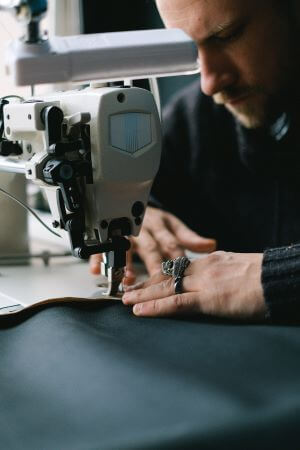
Silk – derived from the cocoons of silk moths and one of the oldest fabrics known to mankind – is considered one of the most luxurious fabrics in the world. Besides comfort, it offers benefits to your hair and skin, as well as helping to regulate body temperature.
You can obviously buy silk sheets or silk pajamas, but what if you want to sew your own or if you’re a manufacturer? Do you know how to weigh silk? What unit of measurement would you even use? We’ll make the learning process as smooth as possible in this blog!
How is Silk Measured?
Unlike cotton, the quality of silk isn’t typically measured by thread count, but by a Japanese weighing unit called momme (pronounced “MOE-mie”) that’s abbreviated as “mm” (not to be confused with the abbreviation for millimeters).
Momme is defined as the weight in pounds of a 45 inch x 100 yard (1.14 meters x 91.44 meters) piece of fabric. If that piece of fabric weighs 8 lbs., the momme weight would be expressed as 8 momme. Broken down into smaller terms that are easier to visualize, an 8 momme piece of silk weighs approximately an ounce per square yard or 35 grams per square meter.
How is Silk Weighed?
Not all scales and balances weigh in mommes. Several Adam Equipment scales and balances offer that weighing unit, including the Highland portable precision balance. For fabrics, it’s generally not necessary to weigh an entire bolt of fabric. Using a balance like the Highland, a smaller sample of silk could be weighed and the result scaled up to calculate the total.

What Momme Silk is Best?
During silk production, the factory adjusts the density and yarn count of the silk thread to control the fabric’s weight, which is expressed in mommes.
With silk, a higher momme indicates better quality because the weave will be heavier and denser. It tells you that more silk was used in the weaving process to make the fabric. For example, with 30 momme silk fabric, the weft (crosswise threads on a loom) and warp (the threads on a loom which the weft are passed over and under to make cloth) of the silk fibers are woven closer together than they would be with a 19 momme silk fabric. Higher momme silks are also made with thicker yarn.

Raw Silk (a textured fabric that is actually silk yarn prior to any finishing processes) ranges from 35 to 40 mommes. Anything less than 20 mommes (weaves like Gauze, Organza, Chiffon, Crepe de Chine and lighter-weight Charmeuse) is considered lightweight silk, 20 to 28 mommes (like heavier Charmeuse) is midweight silk, and anything above 28 mommes (including the heaviest Charmeuse and Raw Silk) would be categorized as heavyweight silk.
Ultimately, the “best” momme depends upon the intended use for the silk. Charmeuse, which ranges from 12 to 30 mommes, would typically be used for silk bedding. That weave allows extra luster or shine on one side (used for the front) with a dull finish on the back, so it’s ideal for items where only one side will be seen, like sheets and duvet covers. Silk sheets made from 30 momme Charmeuse would be stronger, smoother and more lustrous than sheets made from 19 momme Charmeuse. Lightweight silks are used for items like summer scarves or light blouses. Heavyweight silks are ideal for draperies or heavier outer garments.
Questions about weighing silk with your scale? Feel free to reach out to us with your questions and we’ll be happy to help!

